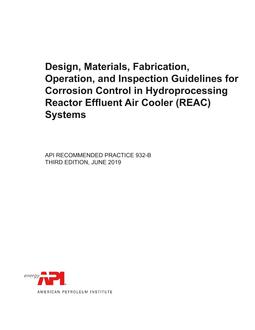
Click here to purchase
Provides guidance to engineering and plant personnel on equipment and piping design, material selection, fabrication, operation, and inspection practices to manage corrosion and fouling in the wet sections of hydroprocessing reactor effluent systems. The reactor effluent system includes the equipment and piping subject to ammonium salting, NH4HS corrosion, and associated fouling. This system usually begins at the last feed/effluent exchanger or first water injection point and continues through the cold high-pressure separator (1, 2, and 3 separator designs) or cold high- and low-pressure separators (4 and 5 separator designs). The reactor effluent system specifically excludes the stripper, fractionator, and final separation sections. However, guidance in this document may be applicable to ammonium salt corrosion mitigation in those areas, as well. The majority of these systems have an air cooler; however, some systems utilize only shell and tube heat exchangers. Reactor effluent systems are prone to fouling and corrosion by ammonium bisulfide (NH4HS) and ammonium chloride (NH4Cl) salts.
This recommended practice is applicable to process streams in which NH4Cl and NH4HS salts can form and deposit in equipment and piping or dissolve in water to form aqueous solutions of these salts. Included in this practice are: details of deterioration mechanisms; methods to assess and monitor the corrosivity of systems; details on materials selection, design, and fabrication of equipment for new and revamped processes; considerations in equipment repairs; and details of an inspection plan.
Product Details
- Edition:
- 3rd
- Published:
- 06/01/2019
- Number of Pages:
- 70
- File Size:
- 1 file , 3.4 MB
- Redline File Size:
- 2 files , 8.5 MB
- Product Code(s):
- C932B03, C932B03, C932B03, C932B03, C932B03, C932B03
- Note:
- This product is unavailable in Cuba, Iran, North Korea, Syria